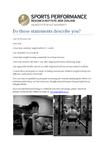|
I admit this melodramatic and mysterious aura to bodybuilding is what still gets me excited about it to this day. That feeling in my gut hasn’t changed since I first read Arnold’s Encyclopedia of Modern Bodybuilding and picked up the weights years ago. I hope it never does, and my intention is not to create a paradigm shift in bodybuilding culture. My intention is however, to look at some of the underlying factors that determine whether an approach has merit scientifically as a way to progress, or whether an approach purely has merit for reader enjoyment and entertainment. Often times both occur simultaneously, but far too often an article can lead excited readers down a path of stagnation or worse, moving backwards.
To understand how and why we grow muscle tissue, lose body fat and see physical changes in response to eating and training, we have to go back to the beginning. We have to forget all of the articles, conversations, anecdotes, studies, books and supplement advertisements we’ve read and look at the human body as what it truly is: an organic adaptation machine. The body is built for survival, every trait we have today came from natural selection; the folks who could survive the ice age, climb the tree before the saber tooth tiger caught them, and go the longest on the hunt without food, supplied us the genetics we have today. We must keep that in mind when evaluating information.
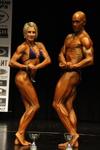 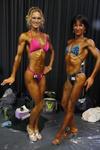
Often I criticize bodybuilding-science for being stuck in the past, but considering the mainstream popularity (or lack thereof) of bodybuilding, it’s not surprising. Most exercise research (and the grant money that backs it) focuses on the obesity epidemic or performance in popular sports that bring money, interest and prestige to people, society, nations and businesses. Let’s face it, writing a research proposal entitled “Best Ways to get 20 inch Guns” probably won’t make it past the first reviewer. So, often what we are left with is second hand sensationalized accounts from champion bodybuilders. For the most part, these accounts from forty to fifty years ago are now being repeated endlessly by their successors with only minor tweaks and changes to the original formula.
This is not to say that there is no merit to any of these methods, just that there is no way to separate what works, what doesn’t work and what could work a whole hell of a lot better. Think about it, if you combine the obsessive work ethic common among bodybuilders, the genetics it takes to get attention at the highest level, and yes let’s face it, the drugs that are used by the most popular bodybuilding icons of old and new, you will see great success no matter what training and dieting techniques are being used.
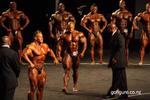 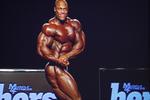 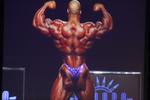
What we often forget is, that for every Pro who trains, diets, and approaches muscle growth in the way that got him or her such great success, there are a couple thousand gym-rats doing the exact same things day in and day out and not looking one tenth the part of bodybuilder they are idolizing. So here is the question: if an approach works for one out of every couple thousand people who tries it, would you try it or call it a good or efficient approach? I would hope not.
So getting back to this “organic adaptation machine” mindset, we can now start to separate fact from fiction. Anytime an approach is trotted out as truth beyond question, ask yourself “does this serve an adaptive purpose?” For example, “high rep sets get you cut bro!” Your first thought should be: how would my body adapt if I challenged it with many high rep sets?
Well, as simplistic as it may sound, doing high reps makes you better at doing high reps! Why would it burn the local body fat off in that area? Even if it did, why wouldn’t the body just restore more body fat in that area since you are constantly utilizing it? Lastly, how could any statement about burning body fat be made if we don’t know the nutritional status of the person in question? In fact, if it was the case that high repetitions caused localized fat loss, every teenage male you encountered would have one normal forearm and one shredded forearm. I’ll let that sink in, and once you’re done shaking your head, I’ll continue.
Now the example I just used is a relatively easy one to myth-bust and figure out, but often you will come across other claims that are harder to evaluate and it’s important to discuss why this is. Well, to really get to the heart of it, we have to realize that hypertrophy (muscle growth) in and of itself is not a “direct-adaptation”. The body doesn’t just get big for big’s sake. When you really think about it, being big has no adaptive purpose. Looking jacked and shredded didn’t help us survive the ice age, however being stronger, having more muscle endurance, and better blood and oxygen supply to muscle tissue did. And it just so happens that these adaptations tend to occur alongside muscle growth. What we have to realize, is that muscle growth is more or less a secondary adaptation.

The body will grow muscle, but always in order to achieve a different adaptation. If you train heavy, more muscle is grown to allow you to be stronger. If you train with higher volume, more sarcoplasm (all the stuff in the muscle cell that isn’t the contractile tissue itself) is needed to supply the energy demands of the sets and reps you are doing. The take home message here is the body doesn’t give a rat’s ass about getting bigger; in fact “training for size” is a misnomer because size is a secondary characteristic to other adaptations. This is why so many different approaches to training work!
Mike Mentzer and Arnold trained on opposite ends of the spectrum, so did Dorian and Lee Haney. That being said, there are some things that must occur in order for muscle growth to happen. First, your training must provide overload. This simply means that whether you are approaching training by lifting heavy, or training with a high volume, it has to be something that your body is not currently adapted to. The amount needed is completely dependent on where you are currently at. For example, studies show that obese women put on walking programs gain muscle. So you don’t need to go from being a couch potato to doing 4 hour long gut-busting workouts initially, and in fact you shouldn’t, because where do you go from there? This comment leads right to the second principle, training must be progressive.
So often you hear about bodybuilders switching things up so that “the muscle won’t adapt”. This is the most ludicrous thing I’ve ever heard! You want the muscle to adapt! The muscle adaptation is growth! Once it adapts and you stall in your progress, it doesn’t mean you need to change your program, it means you need to make it progressive! Simply going into the gym, getting a nasty pump and feeling thrashed does not ensure growth, but doing more work, either by lifting heavier or doing more volume will provide overload once again because it is progressing past the body’s current level of adaptation. The third tenet, has to do with nutrition, yes there is no getting away from needing to pay attention to your diet. Muscle cannot be grown out of thin air even if your training is providing progressive overload, so you must be eating enough to slowly gain weight (I emphasize slowly because if it's fast weight gain, a lot will be fat), and you need to have sufficient protein to build that tissue.

Now, once the big picture is in order, and you've got a foundation of proper nutrition and training that provides an overload and is also progressive, there are other things to focus on to maximize your physique. Sadly, beginners often focus on these details before a foundation is even in place! Trust me when I say this, progressive overload and nutrition are truly 95% of the equation. Everything I mention after this paragraph is very low on the hierarchy of importance in comparison to the basics. If you find yourself stressing about these details, you are doing more harm than good as high stress levels are more counterproductive than getting this final 5% perfect. I have seen countless OCD bodybuilders stressing over supplementation, nutrient timing, and esoteric training approaches when they don't even know how many calories a day they are eating or don't have a plan to ensure progress in the weight room. So let me be very clear before I get into the minutiae: if you don't know how many grams of protein, carbs, and fat you are eating daily, stop reading. If you don't have a training plan that has some sort of structure and a planned approach to progression, stop reading. No seriously, stop. Do not pass go, do not collect $200 (and as we commonly see, spend $200 on supplements).
Okay, if you are reading the words I've written right now, you are someone who not only takes care of business in the kitchen but also in the weight room, and for this I applaud you. This is something many don't have the patience or mental focus to actually spend time learning to do and follow through with. I have spoken to countless bodybuilders who think they "work hard" because they make themselves puke on leg day and eat everything in sight when bulking and starve themselves only eating broccoli and chicken when dieting. While that is hard work, equal effort should be spent on learning the science of the sport. If you don't have the patience and focus to educate yourself and develop a sensible plan, don't fool yourself into thinking you are working as hard as you could be. The most important body part in this sport is your brain, not your quads, pecs, or lats. Neglect and under use your brain at your own peril.
So yes, the basics will get you far, so far in fact that with the right drive and genetics they can take you to the world championship level. However, not all of us are blessed with great genetics, and even those of us who are won't be able to beat other genetic supermen without paying attention to the fine details. Beyond the basics, there are a few things you can do to maximize your physique; to include intelligent supplementation, intelligent nutrient timing, and intelligent application of specific training techniques. Many bodybuilders, supplement companies, magazines, coaches, researchers and others (myself included), will tell you there is much more beyond what I am going to lay out that should be discussed. However, I am only going to focus on the tried and true, researched, validated, and indisputable "extras" that without debate will make a difference.
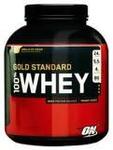 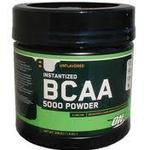
When it comes to supplementation, it is easy to get overwhelmed by a sport propped up by an industry that endorses every Olympian with a different product, and that fills our magazines with ads and pseudo-science. But to this day, there are only a handful of supplements that without a doubt make a measurable difference with regards to bodybuilding (that aren't hormonal). They are: creatine monohydrate (no not any of the fancy creatine products), a basic multi-vitamin/mineral supplement (no not any of the mega, super, sport, or opti vitamins), whey protein powder (optional if you eat dairy around training and have a high protein intake from whole food), and an essential fatty acid supplement (with the caveat that you get a mercury safe source and get 3-4g of epa/dha per day from it, also optional if you regularly eat fish). Yes there are others that may benefit you, but they either don't have the same level of benefit that the ones I listed do, or need to be researched further. Again, I am not making a comprehensive list (in fact I take and recommend more than what is on this list for most people), but instead I'm giving an unbiased account of what is 99% sure to make a measurable difference for almost anybody.
When discussing protein, time and time again the debate of how much to consume to maximize muscle gains comes up. Well let's be honest, even bodybuilders who are on the low end of the of consumption spectrum in our community (you know, "only" eating 1g per pound of bodyweight) are getting plenty, especially if they are in a caloric surplus. However, what's proven to be also important is the timing of protein intake relative to training. In fact, some researchers would go so far as to say that taking in slightly too little protein, but timing it properly would give you a better growth response than taking in enough protein without regard to when it is consumed. While still being studied, research has proven that eating protein after training augments the anabolic response to resistance training.
Also, if you are in a calorically restricted or glycogen depleted state, it may be beneficial to consume carbohydrate prior to training. As far as after training, only if you are planning on training again that day do you need to consume carbohydrates immediately after training to maximize glycogen synthesis. If you are in a fed state (meaning you ate a meal at some point earlier that day that included protein and carbs) before training, what you consume afterwards and how quickly you consume it is less important. However, if you go into training first thing in the morning, in a fasted state, or it's been a while since you've eaten (over 4 hours just to give a guideline), it would be beneficial to either have whey or BCAA post workout along with a carb source. A single scoop of quality whey protein or 5-10g of BCAA (depending on body size) will get the job done.
There has also been extensive research done on muscle growth and training, and it is completely undisputable that progressive tension overload is the key to contractile tissue growth. However, there is more to muscle than contractile tissue and other training styles can influence non-contractile growth. For this reason high rep, high volume, lactate-inducing training that produces a painful pump has it's place.
There is a reason that studies show that heavy load, lower volume training doesn't produce the same muscle cross sectional area gains that higher volume training provides. There is a reason that bodybuilders for ages have included varying degrees of "pump up" training into their programs. While the back-bone of a bodybuilding routine should be heavy compound lifting focused on gaining strength, some attention should be given to accessory work of a more traditional "pump it up" style. This should be done with isolation movements and high rep, metabolically fatiguing loads, and rest periods and tempos that put constant tension on the muscle.
Sarcoplasmic growth (sarcoplasm includes all the non contractile tissue in muscle; glycogen, fluid, etc.) makes a muscle bigger, and the best way to cause it is to augment your heavy training with this approach. Just to throw out a figure for application, I recommend an 80/20 ratio of heavy strength training to high rep, traditional, pump-up isolation training. Make sure to focus on keeping constant tension on the muscle, keeping the reps high and the rest periods low to produce high levels of metabolic fatigue.

To conclude, if your training provides progressive overload, truly any approach will work. For continued muscle growth, the body must be forced to make new adaptations. Training with the same weights over time will leave you with the same physique over time. We have to continually challenge our bodies with higher levels of tension if we want to continually grow. So if the weights aren’t moving up, you can expect yourself to be looking the same.
Secondly, your nutrition has to support your training; sufficient dietary protein and enough calories to gain muscle are absolutely required. If you’re focusing on other details before these basic requirements are met, you’re missing the forest for the trees. However, if the basics are in order, there are a few other things you can do to maximize your physique and progress. Although I have not laid out a comprehensive list of what "extras" should be focused on, I can say with confidence that what I've outlined is probably the most worthy of mention. But again, one should not even spend time thinking about supplementation, nutrient timing, advanced training methods and other extras until they have their basic nutrition and training firmly in place.
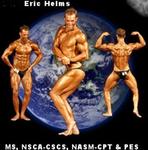
by Eric Helms
3D MuscleJourney.com
Reprinted with permission from www.3dmusclejourney.com
authored by Eric Helms, MS, CSCS PNBA Professionally Qualified Bodybuilder
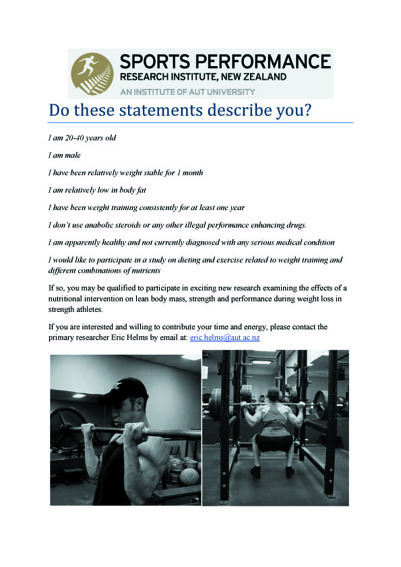
|



